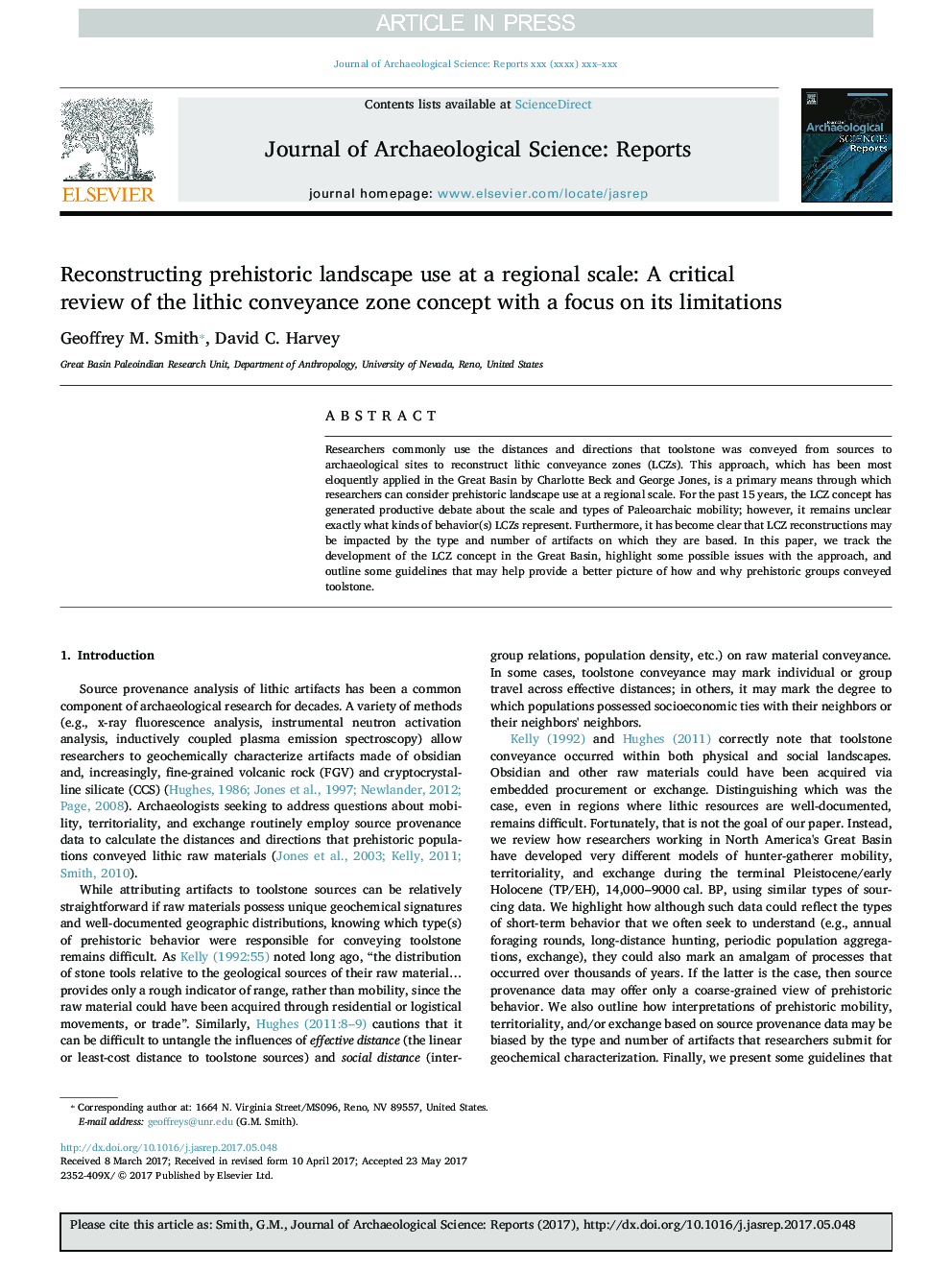| Article ID | Journal | Published Year | Pages | File Type |
|---|---|---|---|---|
| 7444264 | Journal of Archaeological Science: Reports | 2018 | 8 Pages |
Abstract
Researchers commonly use the distances and directions that toolstone was conveyed from sources to archaeological sites to reconstruct lithic conveyance zones (LCZs). This approach, which has been most eloquently applied in the Great Basin by Charlotte Beck and George Jones, is a primary means through which researchers can consider prehistoric landscape use at a regional scale. For the past 15Â years, the LCZ concept has generated productive debate about the scale and types of Paleoarchaic mobility; however, it remains unclear exactly what kinds of behavior(s) LCZs represent. Furthermore, it has become clear that LCZ reconstructions may be impacted by the type and number of artifacts on which they are based. In this paper, we track the development of the LCZ concept in the Great Basin, highlight some possible issues with the approach, and outline some guidelines that may help provide a better picture of how and why prehistoric groups conveyed toolstone.
Related Topics
Social Sciences and Humanities
Arts and Humanities
History
Authors
Geoffrey M. Smith, David C. Harvey,
